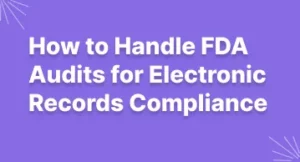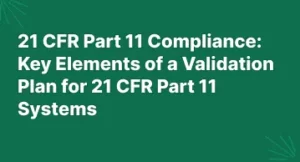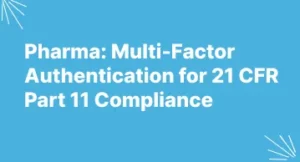Expectation vs. Reality: Document Automation Exposed
Introduction
In today’s digital age, businesses across various industries are constantly seeking ways to streamline their operations and enhance efficiency. One area that has garnered significant attention is document automation. Document automation promises to revolutionize how organizations handle paperwork, offering the allure of streamlined document creation, enhanced accuracy, improved collaboration, and substantial time and resource savings. However, the gap between these expectations and the reality of implementing document automation is often significant. In this blog, we will delve into the world of document automation, exploring the challenges and opportunities it presents. Additionally, we will highlight the role of MSB Docs eSignature solution in bridging this gap.
Expectations in Document Automation
Streamlined Document Creation
- Expectation 1: The Promise of Efficiency: In the world of document automation, the first and foremost expectation is increased efficiency. Businesses anticipate that automating document creation will expedite the process, reduce manual errors, and minimize the time spent on repetitive tasks. This efficiency is expected to translate into significant cost savings.
- Expectation 2: Cost Savings Through Automation: A natural consequence of increased efficiency is cost savings. Organizations look forward to reducing their operational costs by automating document creation processes. This includes savings on paper, printing, and storage costs, as well as the elimination of labor-intensive document assembly.
Enhanced Accuracy and Compliance
- Expectation 1: Expectations of Error Reduction: One of the primary selling points of document automation is the promise of enhanced accuracy. Automated systems are expected to drastically reduce errors in documents, whether they are contracts, legal agreements, or financial reports. The expectation is that with automation, human errors will be virtually eliminated.
- Expectation 2: Ensuring Regulatory Compliance: Businesses operating in regulated industries, such as healthcare and finance, rely on document automation to ensure compliance with industry-specific regulations. The expectation is that these systems will generate documents that meet all necessary compliance standards, reducing the risk of legal issues and fines.
Improved Collaboration and Accessibility
- Expectation 1: Real-Time Collaboration: Document automation tools are often marketed as collaborative platforms, enabling teams to work on documents simultaneously in real-time. The expectation is that these tools will break down geographical barriers, allowing team members to collaborate seamlessly.
- Expectation 2: Accessibility from Anywhere: In an increasingly remote and globalized world, the expectation is that document automation will provide easy access to documents from anywhere, on any device. This accessibility is anticipated to boost productivity and facilitate remote work.
Time and Resource Savings
- Expectation 1: Automation’s Potential for Time Efficiency: Organizations expect document automation to save substantial amounts of time in document creation and management. The belief is that employees can redirect their time and efforts toward more strategic tasks, thereby increasing productivity.
- Expectation 2: Optimizing Human Resources: Another expectation is that document automation will optimize human resources by reducing the need for manual data entry and document assembly. This should allow employees to focus on tasks that require creativity and critical thinking.
The Reality Check
While the expectations in document automation are undoubtedly promising, the reality often presents a different picture.
Document Automation Challenges
- Expectation 1: Complexity of Document Processes: Document automation can be a complex undertaking. Many organizations find that their existing document processes are intricately woven into their operations, making it challenging to automate them seamlessly. The reality is that automation often requires a significant overhaul of existing processes.
- Expectation 2: Integration Issues with Legacy Systems: In the real world, businesses often grapple with legacy systems that are not easily compatible with modern automation tools. Integrating these systems with new document automation solutions can be a formidable challenge, leading to delays and disruptions.
Addressing Accuracy and Compliance
- Expectation 1: Navigating Legal and Regulatory Hurdles: While document automation can improve accuracy and compliance, it does not eliminate the need for legal expertise. Organizations must navigate complex legal and regulatory requirements, and the responsibility for ensuring compliance ultimately rests with them, not the automation tools.
- Expectation 2: The Role of Human Oversight: Even with automation, human oversight remains crucial. Human judgment is required to interpret nuanced legal language, negotiate contract terms, and make decisions that go beyond the capabilities of automated systems.
Collaboration and Accessibility
- Expectation 1: Collaborative Tools Limitations: Collaborative features in document automation tools are often limited in comparison to dedicated collaboration platforms. While they facilitate basic collaboration, more sophisticated collaborative needs may require additional tools.
- Expectation 2: Accessibility Barriers: Accessibility from anywhere is achievable, but it also raises concerns about security and data protection. Organizations must strike a balance between accessibility and protecting sensitive information.
Cost and Resource Considerations
- Expectation 1: The Cost of Implementation and Maintenance: Document automation solutions come with implementation costs, including software licenses, training, and possibly consulting fees. Maintenance costs should also be factored in, as software requires updates and ongoing support.
- Expectation 2: Employee Upskilling and Adaptation to Change: Automating document processes may require employees to acquire new skills or adapt to different ways of working. The reality is that this transition can be met with resistance and may necessitate additional investment in training and change management.
MSB Docs eSignature Solution
Amidst the challenges of document automation, solutions like MSB Docs eSignature stand out as valuable assets for businesses seeking to bridge the gap between expectations and reality.
A. Introduction to MSB Docs
Overview of MSB Docs eSignature Solution: MSB Docs eSignature is a comprehensive electronic signature solution that allows organizations to streamline their document signing processes. It offers a secure and compliant way to sign, send, and manage documents digitally.
Key Features and Benefits: MSB Docs eSignature provides a range of features, including electronic signatures, document tracking, audit trails, and secure storage. Its benefits include improved efficiency, reduced paperwork, enhanced security, and accelerated decision-making.
B. Aligning Expectations with Reality
How MSB Docs Bridges the Gap: MSB Docs eSignature addresses the challenges of document automation by offering a user-friendly and secure platform for electronic signatures. It integrates seamlessly with existing workflows and systems, simplifying the transition to digital document processes.
C. Integrating MSB Docs into Document Automation
Seamless Integration Possibilities: MSB Docs eSignature is designed to work seamlessly with other document automation solutions, enhancing the overall document lifecycle. This integration ensures that organizations can fully harness the power of automation while maintaining compliance and security.
Enhancing Document Creation, Collaboration, and Compliance: The integration of MSB Docs eSignature simplifies document creation, promotes collaboration, and ensures compliance with legal and regulatory requirements. It empowers organizations to create, manage, and sign documents with confidence.
D. Cost-Effectiveness and ROI
Understanding the Pricing Model: MSB Docs eSignature offers flexible pricing options, making it accessible to organizations of all sizes. Understanding the pricing model helps businesses evaluate the cost-effectiveness of implementing the solution.
Calculating the Return on Investment: By quantifying the time and cost savings, as well as the reduction in errors and compliance risks, organizations can calculate the return on investment of adopting MSB Docs eSignature. This analysis demonstrates the tangible benefits of the solution.
Tips for Successful Document Automation
- A. Identifying the Right Use Cases: Selecting the most suitable processes for automation is crucial. Start with use cases that offer the highest ROI and gradually expand automation efforts.
- B. Employee Training and Change Management: Invest in training programs and change management strategies to ensure that employees embrace and adapt to new document automation processes.
- C. Ongoing Monitoring and Optimization: Regularly evaluate the effectiveness of document automation processes and make necessary adjustments to optimize performance continually.
- D. Leveraging MSB Docs and Other Solutions: Combine the capabilities of MSB Docs eSignature with other document automation tools to create a comprehensive document management ecosystem that aligns with organizational goals.
Document automation is a transformative tool for businesses, but it’s essential to have a clear perspective on its practical implications. For insights into how document automation can bring about key changes for business success, we recommend reading our blog on ‘Revamping Your KYC Process: 3 Key Changes for Business Success’. This will provide you with valuable insights into the real-world application of document automation.
Conclusion
In the realm of document automation, expectations often meet the reality of complex challenges. However, with the right tools and strategies, businesses can bridge the gap and unlock the true potential of automation. MSB Docs eSignature solution plays a pivotal role in this journey, offering a user-friendly and secure platform for electronic signatures. As industries continue to evolve, document automation and eSignature solutions will become increasingly integral to success. By embracing these technologies while remaining mindful of the challenges they entail, organizations can position themselves for a more efficient and competitive future. It’s time to turn the promise of document automation into a reality.
Explored the gap between expectation and reality in document automation? Ready to bridge that gap and elevate your automation game? Take the next step with MSB Docs. Request a demo or book your free trial today.
FAQs
1. What exactly is document automation, and why is it essential for businesses?
Document automation is the process of using technology to create, manage, and streamline documents. It is essential for businesses to improve efficiency, reduce errors, and save costs associated with manual document handling.
2. How does MSB Docs eSignature solution address the challenges of document automation?
MSB Docs eSignature simplifies document signing processes and integrates seamlessly with existing workflows. It enhances document creation, collaboration, and compliance while offering a secure platform for electronic signatures.
3. Can MSB Docs eSignature be integrated with other document automation tools?
Yes, MSB Docs eSignature is designed to integrate seamlessly with other document automation solutions, creating a comprehensive document management ecosystem that aligns with organizational goals.
4. What industries have seen success with MSB Docs eSignature, and how has it benefited them?
Industries like legal firms, healthcare organizations, and financial institutions have realized significant benefits with MSB Docs eSignature. It has expedited processes, improved compliance, and enhanced customer experiences in these sectors.
5. How can businesses calculate the return on investment (ROI) of implementing MSB Docs eSignature?
To calculate ROI, organizations can quantify time and cost savings, error reductions, and compliance improvements resulting from MSB Docs eSignature. This analysis demonstrates the tangible benefits of the solution in financial terms.





